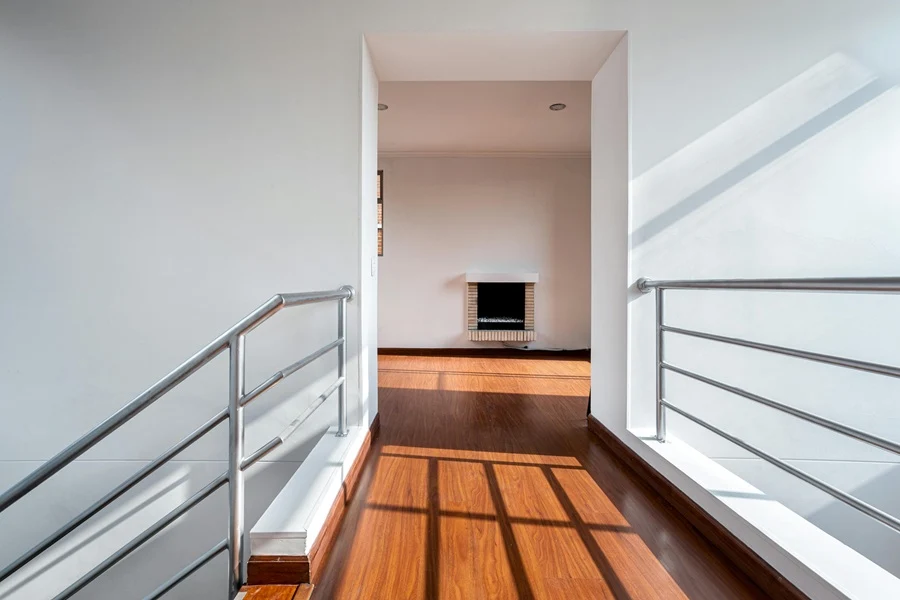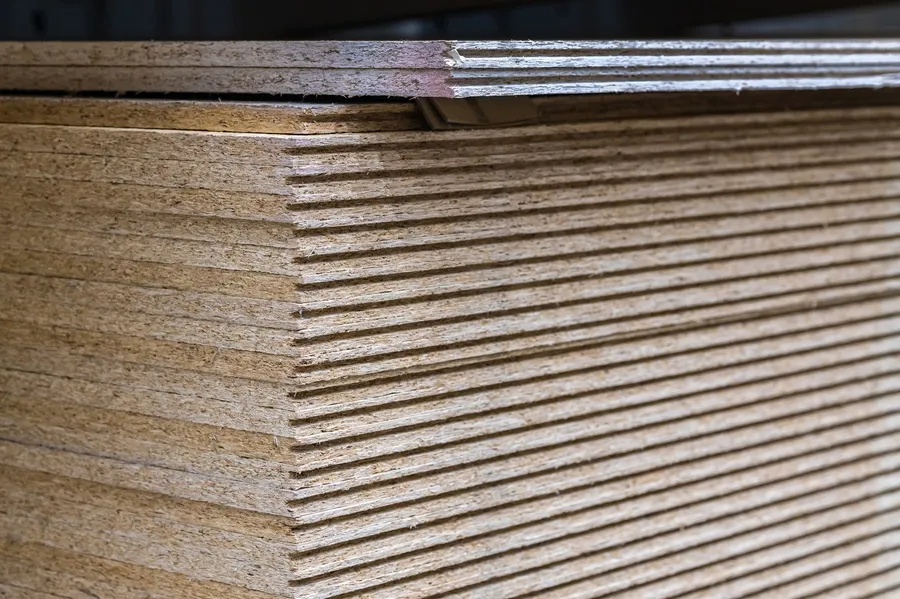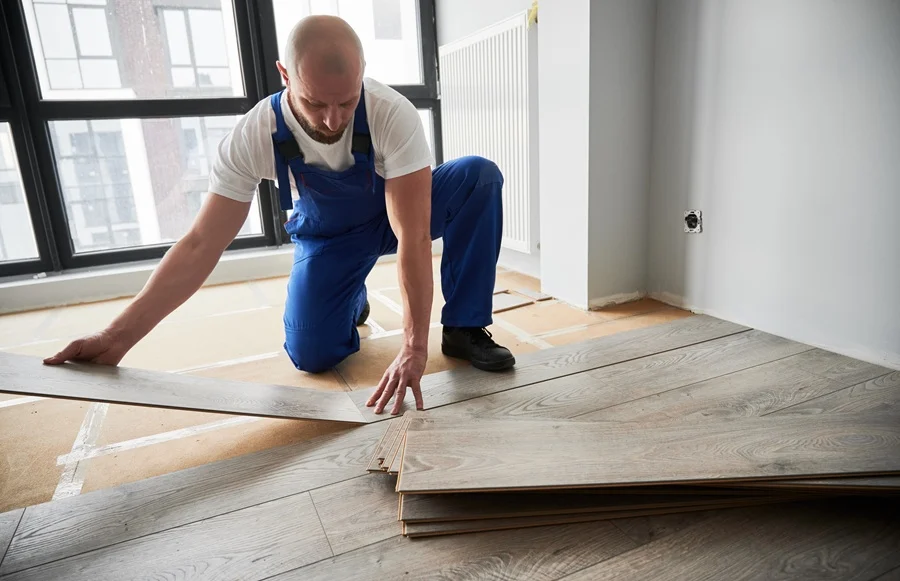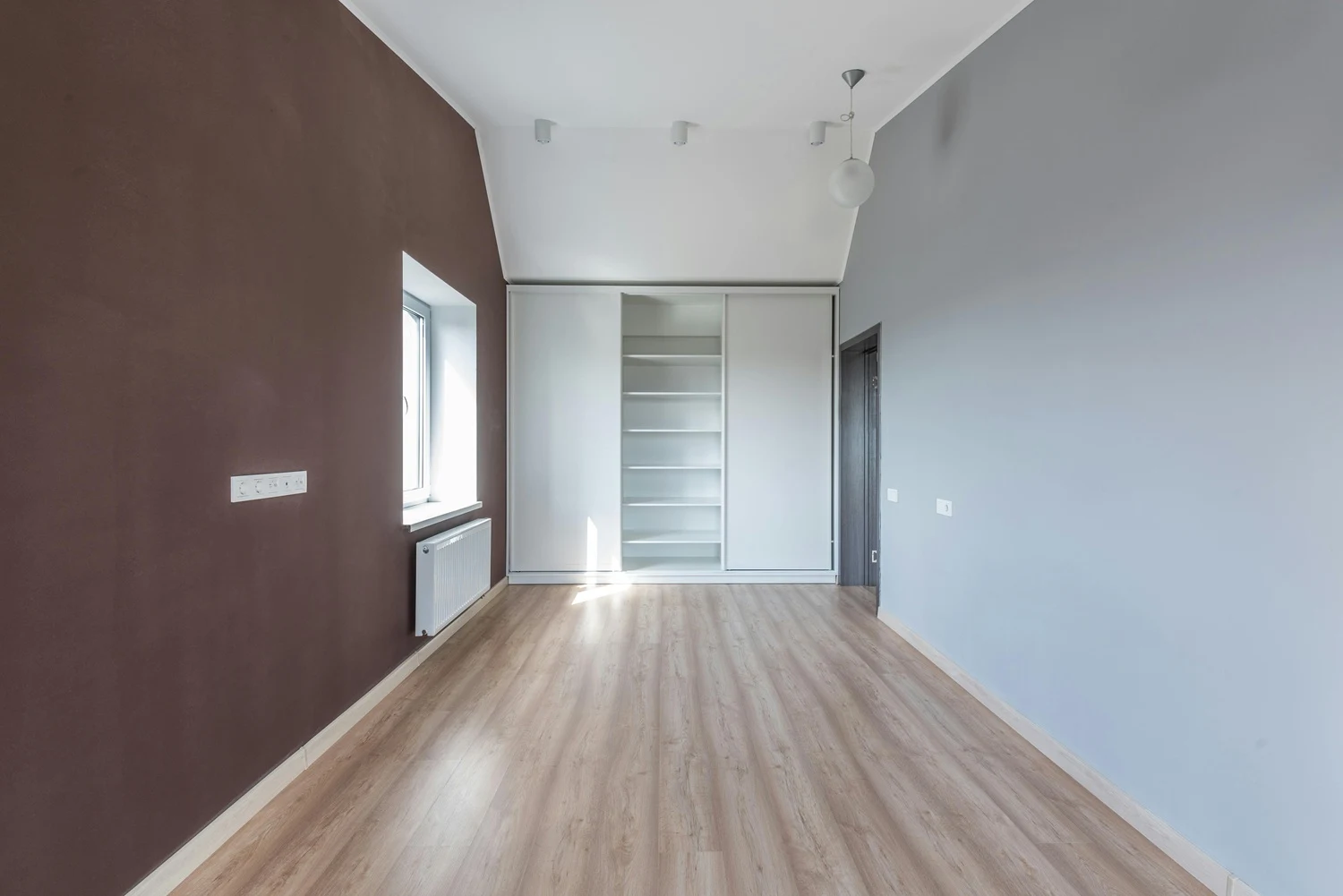Modern laminate flooring typically lasts 15 to 25 years in Chicago homes, though premium products with AC4 ratings can exceed 30 years with proper maintenance. Your floor's actual lifespan depends on material quality, installation precision, and daily care routines.
As experienced laminate flooring installers serving Chicagoland for decades, we've witnessed firsthand how proper selection and maintenance transform a budget-friendly floor into a decades-long investment. This comprehensive guide reveals exactly what determines laminate durability and how to achieve maximum lifespan from your floors.
Laminate Flooring Durability Ratings Explained

The Abrasion Class (AC) rating system provides objective durability measurements that predict your floor's lifespan. Developed by the European Producers of Laminate Flooring (EPLF), these ratings indicate resistance to wear, impact, staining, and burns through standardized testing protocols.
Chicago homes require minimum AC3 ratings for residential areas, while high-traffic zones benefit from AC4 specifications. The rating directly correlates with wear layer thickness: AC3 features 20-25 mil layers lasting 15-20 years, while AC4's 30-40 mil construction extends lifespan to 25+ years.
Primary Factors Affecting Laminate Floor Lifespan
Your laminate floor's longevity depends on interconnected factors that either accelerate or prevent deterioration. These elements help identify potential problems before permanent damage occurs.
Quality of Materials and Construction

High-density fiberboard (HDF) cores resist moisture penetration better than medium-density alternatives. Premium laminate incorporates melamine resin wear layers infused with aluminum oxide particles, creating scratch resistance comparable to hardwood while maintaining budget-friendly pricing. Leading brands like Shaw Floors, LW Mountain, Green Touch Flooring, and CasaBella engineer their products with these advanced HDF cores and enhanced UV protection specifically tested for Chicago's variable climate conditions.
The decorative layer's photographic quality determines fade resistance under Chicago's intense summer sun. UV-resistant coatings extend color retention from 5-7 years to 15+ years, particularly important for south-facing rooms receiving direct sunlight. Quality brands like CasaBella's waterproof collections and Green Touch's eco-friendly lines feature multi-layer UV protection that maintains color vibrancy even in sun-drenched spaces. Backing layers containing moisture barriers add crucial protection against concrete subfloor emissions common in Chicago basements.
Installation Quality Impact
Professional installation extends laminate lifespan by 30-40% compared to DIY attempts, particularly in Chicago's older homes with uneven subfloors. Proper acclimation requires 48-72 hours in climate-controlled conditions matching your home's temperature and humidity levels. Skipping this step causes immediate buckling as materials expand after installation.
Subfloor preparation determines long-term stability. Self-leveling compounds correct variations exceeding 1/8 inch over 6 feet, preventing stress points that crack laminate cores. Vapor barriers prove essential for below-grade installations, where moisture emissions average 5-8 pounds per 1,000 square feet daily. Professional installers maintain proper expansion gaps (3/8 to 1/2 inch) around perimeters, accommodating Chicago's 60% annual humidity variations without buckling.
Maintenance Strategies for Maximum Longevity
Proper maintenance extends laminate lifespan by 40-60% while preserving warranty coverage. Chicago's seasonal extremes demand adapted care routines for specific environmental challenges.
Essential maintenance schedule:
- Daily: Sweep or dust mop high-traffic areas, wipe spills immediately.
- Weekly: Damp mop with pH-neutral cleaner, check for moisture at seams.
- Monthly: Deep clean textured surfaces, inspect for scratches or gaps.
- Quarterly: Apply manufacturer-recommended floor refresher.
- Annually: Professional inspection and deep cleaning service.
Critical maintenance mistakes to avoid include using steam mops that force moisture through seams, applying vinegar solutions that degrade aluminum oxide layers, and neglecting doormat systems that prevent 70% of tracked debris. Indoor humidity control between 30-50% prevents seasonal gapping while reducing static electricity during Chicago winters.
Common Problems That Shorten Laminate Lifespan
Early warning signs help prevent minor issues from becoming expensive replacements. Chicago's climate creates specific challenges that require proactive monitoring and immediate response.
Water damage poses the greatest threat to laminate longevity. Modern water-resistant cores handle minor spills, but standing water destroys HDF cores within hours. Pet scratches, furniture dragging, and Chicago's winter salt create surface damage that accumulates over time. South-facing rooms experience faster UV fading without proper window treatments.
If you notice any gaps appearing between your laminate planks, it's essential to address them promptly. Gaps can worsen over time and lead to more significant issues. Learn how to fix gaps in laminate flooring with simple solutions to restore the integrity of your floor.
Comparing Laminate to Alternative Flooring Lifespans
Laminate flooring lasts 15-25 years, offering an affordable and durable option for budget-conscious families. While it can't be refinished like hardwood, it excels in scratch resistance and moisture tolerance, making it ideal for busy households.
Solid hardwood lasts 50-100+ years, with refinishing every 10-15 years. Engineered wood offers 25-40 years with limited refinishing, suited for moisture-prone areas. Luxury vinyl matches laminate in lifespan and excels in waterproofing. Carpet needs replacement every 7-12 years, while porcelain tile lasts 50+ years but lacks comfort underfoot.
Here’s a quick breakdown:
Overall, laminate offers a balanced solution with decent durability and cost advantages compared to premium materials, especially with modern improvements in water-resistant cores and enhanced wear layers. If you’re considering laminate for areas like kitchens and bathrooms, choosing waterproof laminate could offer additional protection against spills and moisture. Find out how efficient waterproof laminate flooring can be for moisture-prone areas.
When to Replace vs. Repair Laminate Flooring
Assessment of damage severity determines whether repair extends floor life or replacement becomes necessary.
✅ Repairable issues:
- Minor surface scratches (color-matched putty)
- Single damaged planks (click-lock replacement)
- Small gaps between boards (wood filler)
- Light scuff marks (manufacturer repair kit)
❌ Replacement required:
- Water damage affecting the subfloor
- Widespread wear through the decorative layer
- Multiple separating seams (>10% of floor)
- Severe buckling or warping
- Repair costs exceeding 30% of the new installation

Individual plank replacement works when damage affects less than 10% of the total floor area. Complete replacement becomes cost-effective when multiple issues compound or structural integrity fails.
Making Your Laminate Flooring Last in Chicago
Maximizing laminate longevity requires informed product selection, professional installation, and disciplined maintenance adapted to Chicago's challenging climate. Choose minimum AC3 ratings for bedrooms and AC4 for living areas, prioritizing water-resistant cores for kitchens and basements. Simple Flooring brings decades of Chicago-specific expertise, ensuring your laminate investment delivers maximum value and beauty. Contact us today to explore durable laminate solutions perfect for your home.
.svg)






.svg)

.avif)



